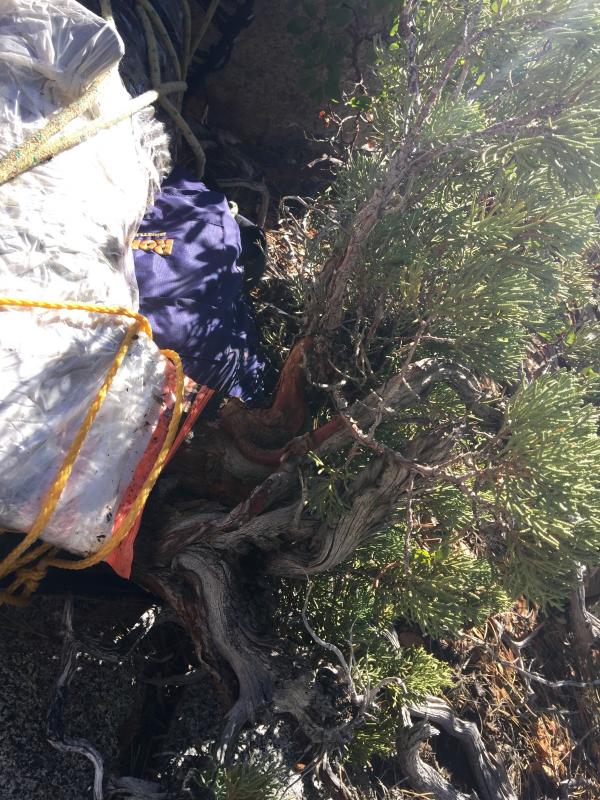
*Update- 7/3/17
Sorry all! I've always stored my pictures on Photo Bucket. They recently updated their terms and I no longer have access to my pictures unless I pay $399 per year. Currently working on other options and hope to get the site back up and running asap. Here's a picture from my last collecting trip. Lots of beautiful water flowing in the Sierra, Thanks for visiting!

You'll probably see pictures of my trees on Facebook before I throw them up on my Blog. I hope you can find some value in these posts, or at least you don't mind looking through the pictures. Personally, I'm a big fan of the fact that I can look back on my blog and it helps me keep track of dates, see what I was thinking at the time and see the progress of my trees. Here we are just after collection a few years ago. The trees large root ball was wrapped in trash bags which contained moist New Zealand Sphagnum moss and tied to my metal frame pack to hike it back to the trunk.

Fast forward to summer of 2016. Here it is before the work, growing vigorously and ready for some initial frame work and setting branches into place. Notice all the branches growing straight up towards the light, I could have worked on the tree earlier, but just didn't find time to make it happen. This Western or Sierra Juniper is the most vigorous species of Juniper that's native to the U.S.

I decided to bend the live vein/branch in the center of the tree so it could be incorporated into the design, using it's foliage to create the new apex of the tree. I wanted to protect this important area so I wrapped it with raffia and used thick aluminum wire as a supportive spine. The aluminum wire allows the pressure of the bend to be divided more evenly throughout the length of the branch, so no one area should be taking more force than other areas.
After adding the wire spine I used more raffia to hold the spine in place. While it wasn't an extremely severe bend, I was still relieved that it went well and the end result was a success. If this branch died, the tree would have lost a ton of what makes it unique and interesting.



Fast forward to Dec 2016, when I cut off a significant portion of the root mass. You can see how the tree grew out again.

And the final fast forward to last weekend when I worked the tree again. The first step was to remove this back branch which is located too high up to be incorporated into the design.

I replaced about 20% of the existing wire on the tree, because it was biting into the branches. I cut the tree back in certain areas and adjusted the branches into place.
During this adjustment, I erred on the side of caution and didn't remove all the branches I normally would have if I didn't work the tree so much recently. The blue towel is covering one branch that I definitely want to jin, but that will happen next time. This tree still has a ways to go before it's show ready. I'd like to develop the branch on the viewers right hand side and likely shorten the foliage on the left hand side. The tree is too symmetrical right now, but lengthening the right hand side and likely shortening the left hand side will help create the asymmetrical style i'm looking for. The tree also needs a good cleaning and removal of bark in several areas. I expect it to look a lot better in the future.

 Lastly here's a closer shot, showing the live vein V, dead wood and spiky jin. I've only seen two junipers that have reversed their sap flow like this in order to survive. It will be cool to see the V enlarge over time and to see the tree get more refined. Thanks for taking a look!
Lastly here's a closer shot, showing the live vein V, dead wood and spiky jin. I've only seen two junipers that have reversed their sap flow like this in order to survive. It will be cool to see the V enlarge over time and to see the tree get more refined. Thanks for taking a look!









































